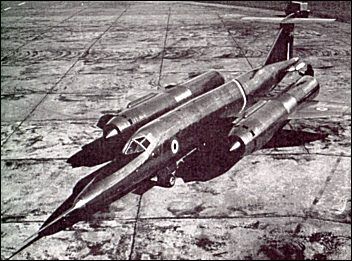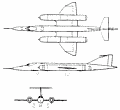 |
Bristol 1881962 |  |
| RESEARCH AIRCRAFT | Virtual Aircraft Museum / United Kingdom / Bristol |
 |
The Bristol 188, sometimes called the 'flaming pencil', was designed to research structures for sustained supersonic flight, particularly in support of the Avro 730 reconnaissance aircraft. This required the aircraft to 'soak' at Mach 2.6 for at least 30 minutes. To achieve the required strength the structure was largely stainless steel, which required new techniques and great expense to fabricate into an airframe. Take-off speed was nearly 483km/h, but in all other respects the 188's speed was slower than desired, being able to achieve Mach 2.0 for only a couple of minutes. The whole project cost a huge GBP20 million and failed to achieve its objectives. It was wound down rather than develop the engines further. Test pilot Godfrey Auty was voted the 'man most likely to eject in the coming year' by his peers but thankfully never had to. FACTS AND FIGURES © A new type of stainless steel, joined by a new 'puddle' welding process was needed fot the 188. It took over two years to develop the steel before it could even be ordered for construction use. © The PS.50 (modified Gyron Junior) engines had greater diameter than the fuselage but never developed enough thrust to push the 188 to the high speeds required. © Fuel capacity was usually only enough for 20-25 minutes flight including a high-speed run. By airline standards the 188 was in a fuel emergency situation before take-off. Bristol 188 on YOUTUBE

|  COMPANY PROFILE | ||||||||||||||||||||||||||||||||||||||||||
 |

|

